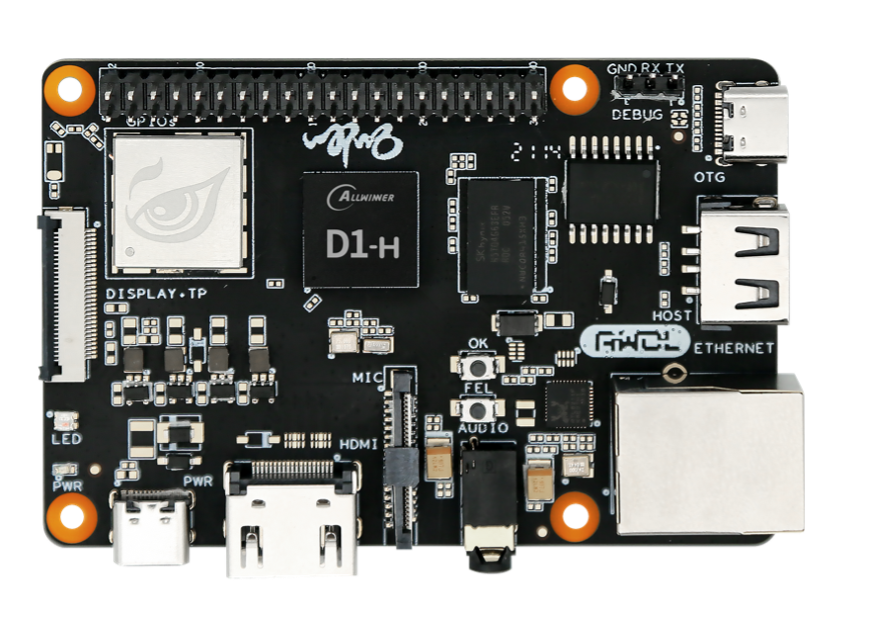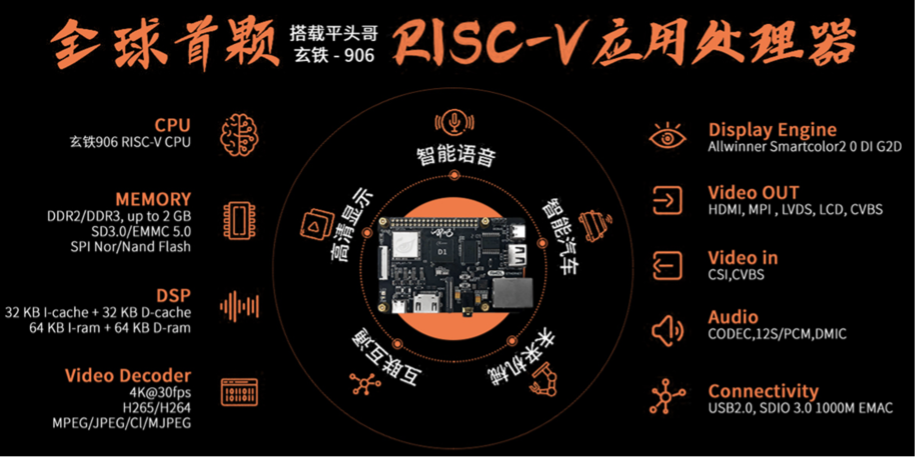...
When we delivered the above topic, we didn’t have a real RISC-V device in hand and were still using QEMU simulator to develop the prototype of enabling Open Horizon to support RISC-V architecture. With the helps from Wei Fu, Senior Software Engineer at Red Hat and RISC-V International Ambassador at China, and Wei Wu, PLCT Lab Director at Chinese Academy of Sciences, we were so excited to get one Nezha (哪吒) 64-bit RISC-V SBC (Single Board Computer) mailed by Wei Wu last Dec.. Thanks so much Wei Wu and Wei Fu!
In the past few months, we’ve spent some spare time setting up the Nezha board, installing Fedora Linux, bringing up the docker env, and now working on building an edge computing playground based on Nezha RISC-V SBC and Open Horizon technologies. Although we’re still in the process of refining the design and constructing the playground in our spare time to address different scenarios, I’d like to share what we have been doing so far and lessons learned from time to time, as our working notes which I hope are helpful for you too if you want to learn or play with these technologies by yourself.
...
The Nezha SBC is a RISC-V single board computer, produced by Allwinner Technology (全志科技). The core of the board is Allwinner D1 SoC based on Alibaba T-head’s RISC-V-based XuanTie C906 core. You can get the detailed specs about Nezha SBC from this link: https://d1.docs.aw-ol.com/d1_dev/ (Sorry, many in Chinese, but you can get the key specs from this picture.)
With the evolving and explosive growth of Edge Computing and convergence of IoT, 5G, AI, Edge and Cloud technologies, it creates a lot of imaginations and possibilities to integrate and innovate the current technologies and drive the digital transformation across the industries. Meanwhile, it brings more growth opportunities and broader ecosystem for RISC-V as one of the most promising IoT and edge computing infrastructures, with the advantage of cost, flexibility, customization for purpose, and open source innovations and ecosystem, compared with the current mainstream architecture of ARM and x86.
...
Ok, let’s stop here for today. In the next post, I will bring you to our Day 1 when we set up the Nezha SBC for running Open Horizon. Stay tuned! 😊
(The paper is also available in https://www.linkedin.com/pulse/open-horizonrisc-v-edge-computing-playground-david-yao/ )

